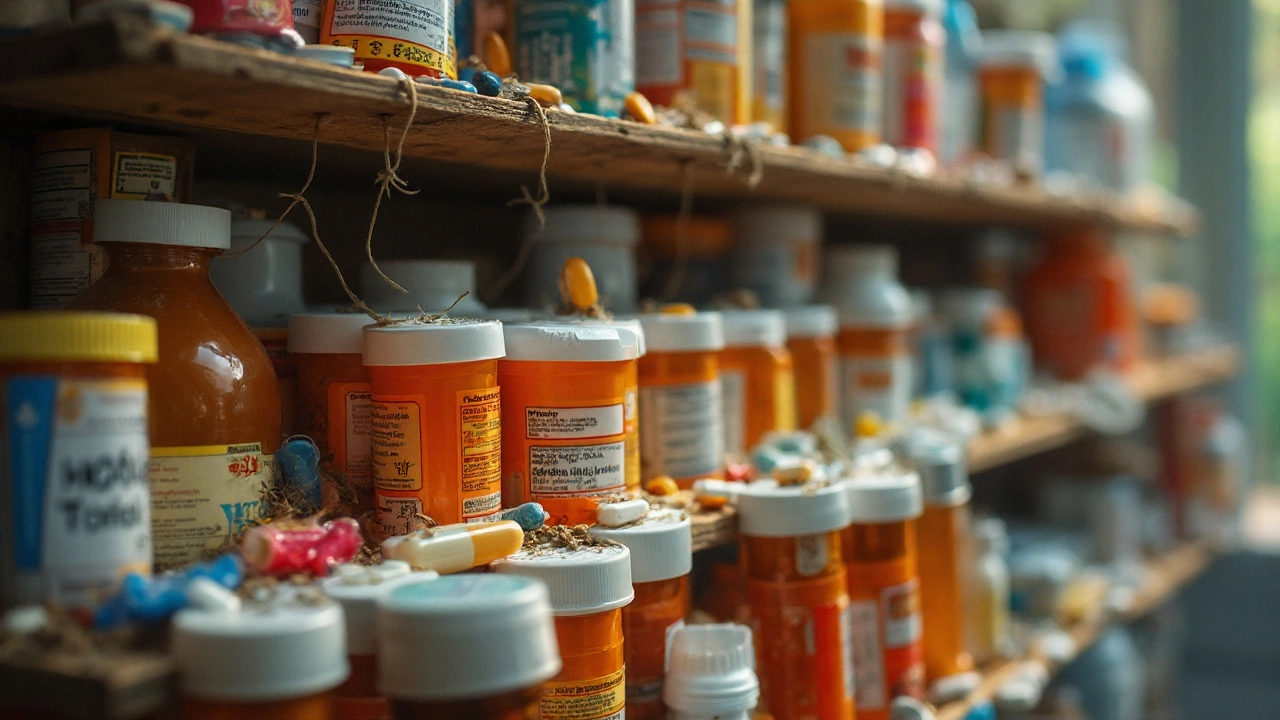Medication Risks: What You Need to Know to Stay Safe
Ever taken a pill and wondered if it could do more harm than good? You’re not alone. Medications save lives, but they can also cause unwanted side effects, interactions, or dosing errors. Knowing the basics helps you avoid nasty surprises and keeps you in control of your health.
Common Types of Medication Risks
First, let’s break down the main ways drugs can go sideways:
Side effects. Most medicines have a list of possible reactions—headaches, stomach upset, drowsiness, you name it. They’re usually mild, but some can be serious, like allergic reactions or heart rhythm problems.
Drug‑drug interactions. When you mix two or more drugs, they can boost or block each other's effects. A common example is an over‑the‑counter painkiller that raises the blood‑thinning action of a prescribed anticoagulant, increasing bleed risk.
Wrong dosage. Taking too much or too little can render a medication ineffective or toxic. This often happens with pediatric dosing, where the wrong milligram per kilogram can cause trouble.
Medication errors. Misreading a prescription, confusing look‑alike pills, or using the wrong device (like a metered‑dose inhaler) can all lead to errors.
Allergic reactions. Even if you’ve taken a drug before without issue, your body can develop an allergy later. Watch for hives, swelling, or trouble breathing.
Tips to Reduce Your Medication Risks
Now that you know the risks, here’s how to keep them in check:
1. Ask questions. When a doctor or pharmacist writes a prescription, ask what the drug does, how often to take it, and what side effects to expect. If anything sounds unclear, speak up.
2. Keep an up‑to‑date list. Write down every medication, supplement, and herbal product you use. Share this list with any new healthcare provider.
3. Read the label. Even over‑the‑counter meds have dosage instructions and warnings. Follow them exactly—no “just one more” shortcuts.
4. Use a pill organizer. Sorting doses by day and time reduces the chance of missing a dose or taking a double.
5. Watch for red flags. If you notice new symptoms after starting a drug, note the timing and call your pharmacist or doctor right away.
6. Never mix without checking. Before adding a new prescription, supplement, or herbal remedy, verify that it won’t clash with what you’re already taking.
7. Store meds properly. Some drugs need refrigeration, others should stay out of sunlight. Bad storage can change a drug’s effectiveness.
8. Plan for refills. Running out forces you to skip doses or scramble for alternatives—both risky moves.
By staying curious and organized, you turn medication from a mystery into a tool you control. Remember, the same professionals who write prescriptions are there to help you understand them. Use them as a resource, not just a sign‑off.
Got a specific concern—like a new rash after starting a cholesterol pill? Reach out to your pharmacist, they can often spot the issue before it becomes an emergency. Keeping the conversation open is the simplest, most effective safety net.
Bottom line: medications work best when you work with them. Knowing the typical risks, spotting warning signs early, and following practical safety steps means you get the benefits without the unwanted side effects.

Why Drug Interactions Matter: Risks, Facts, and Everyday Tips
Caleb Drummond Aug 8 0Drug interactions can sneak up on you. Discover how your meds might collide, the dangers, real-life data, and easy tips to keep safe.
More Detail